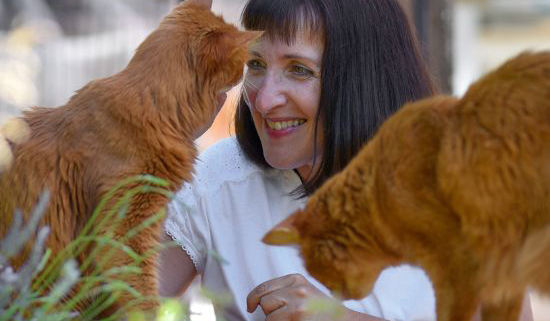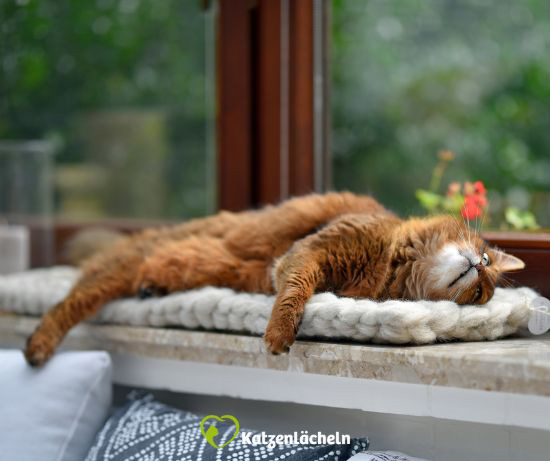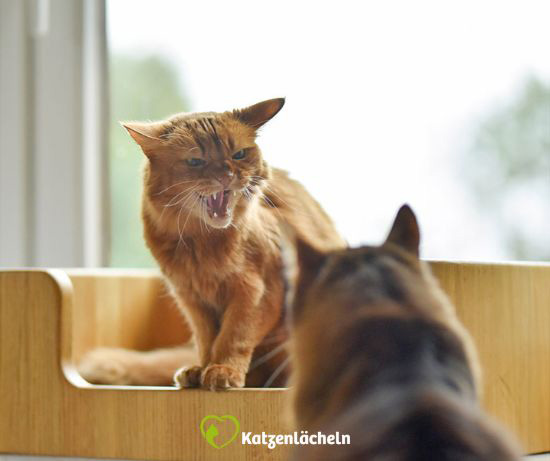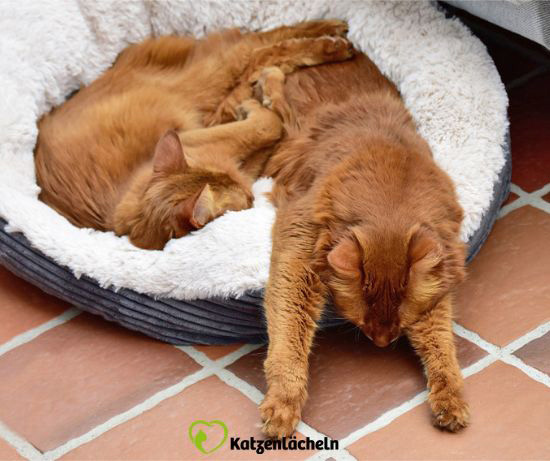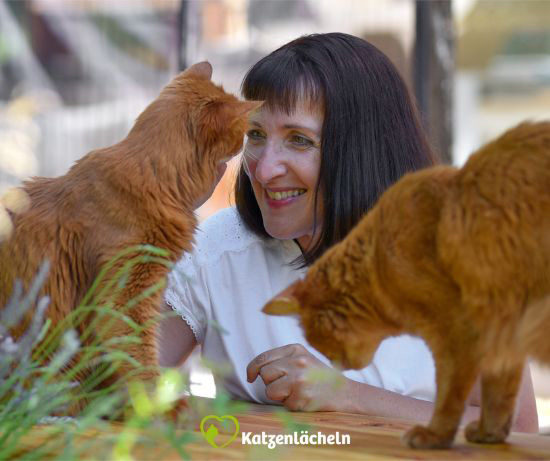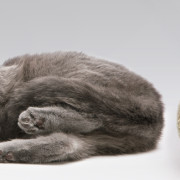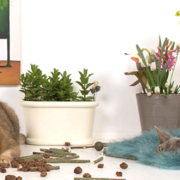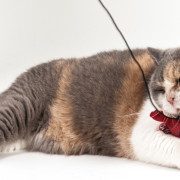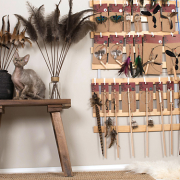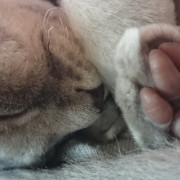Avoid mistakes when starting a new cat relationship
3 Mistakes to Avoid When Starting a New Cat Relationship
A happy and relaxed multi-cat household, that’s what we wish for our furry friends and, of course, for ourselves. However, it’s not a given that the cats we choose will automatically get along and coexist.
We humans often forget that cats don’t necessarily get along just because we’ve fallen in love with a cute cat from a shelter that urgently needs a new home. Cats are individuals and have their own opinions about fellow cats.
Today, we’ll discuss what we humans shouldn’t do in advance to prevent serious conflicts among our furry companions.
Inappropriate Reasons
There are many reasons why we humans decide to bring another cat into our lives, and in many cases, it’s simply about us. WE think our cat has been alone for too long, WE want to rescue a little kitten from the streets, WE think our cat is sad.
When we live with multiple cats, there inevitably comes a point when one feline friend must cross the rainbow bridge. Another cat is left behind, and we might believe that they urgently need a new partner shortly thereafter.
On one hand, we should always ask ourselves whether it’s truly OUR desire, and on the other hand, we mustn’t forget that we cannot simply replace one cat with another. It’s the same with us humans. Each person is an individual and cannot be replaced by another. The same goes for our furry friends who might still be deep in their mourning and suddenly find a new cat thrust upon them: “Look, your new buddy, now you won’t be so alone.” We humans wouldn’t appreciate that either…
Of course, it’s possible that a cat might appreciate well-chosen companionship, but there are many cat relationships where the remaining cat is relieved, able to move around the apartment freely and without fear, or finally receiving the full attention of their human, or simply having peace and quiet, and so on.
In such cases, we should always introspect carefully. What’s behind our desire for a new furry friend? Do we truly have our cat’s well-being in mind? It wouldn’t be fair to act out of purely selfish, though very human, reasons without considering our cats’ needs – otherwise, we might end up with multiple cats at home that can’t get along with each other, and we’ll stand by helplessly. That doesn’t help anyone, which is why the decision to bring in another feline friend should be well thought out.
Inappropriate Choice of a Cat Partner
Let’s assume you’re living with one cat and have decided, after an appropriate amount of time and observation, to introduce a cat partner.
What do you think is more likely:
- Like attracts like, or
- Opposites attract?
I’ll reveal the answer: generally, we should go with Option 1. Here’s a (hypothetical) example:
The male cat siblings Leo and Mohrle, both 2 years old, live in a happy feline relationship. They love to play and wrestle and enjoy sleeping together on the sofa. In an accident, Mohrle passes away, leaving Leo alone. Even after an appropriate period of mourning, Leo’s humans believe their cat is sad. He withdraws, stops playing, and is generally much quieter than before.
At the shelter, there’s a 12-year-old female cat named Mini looking for a new home. She is a very sensitive cat who has lived her entire life as a solo cat with her humans, who had to move to a senior living facility where pets aren’t allowed.
Even though Leo’s humans have fallen head over heels for the sweet cat, it would likely not be a good idea to bring her home. Why? The age difference is substantial, and the needs of a 12-year-old cat and a 2-year-old male cat are usually as far apart as the North and South Poles.
Another consideration is gender. Especially when it comes to play preferences, male cats are generally more physically active, while female cats often react quite annoyed. Aside from the fact that Leo surely has a much greater desire for activity…
Another point against introducing Mini to Leo: Mini has never lived with other cats. It’s unlikely that she would readily accept a male cat used to feline company.
Of course, we can never be absolutely certain how our feline friends will react – none of us have a crystal ball – but overall, the prognosis for Mini and Leo from my perspective is not very favorable.
The humans decide on a three-year-old male cat named Clown. He has grown up with other cats, is very friendly, open, and approachable.
Here, both age, gender, and past life align well, making the likelihood of the two cats getting along much higher – if we humans pay attention to important aspects during the introduction, which brings us to the next point.
Unstructured Introduction
So, Clown is set to move in with Leo – a good idea, but it’s not as simple as bringing Clown home, opening the carrier, and letting things unfold!
For one, Clown surely carries some stress from transportation and perhaps a longer journey, new smells, unfamiliar noises, and now there’s suddenly a completely unfamiliar cat staring at him!
Leo, on the other hand, might have just been taking a nap, is awakened by the commotion caused by his humans, leaves his resting place, and walks straight into another cat – all of a sudden and without any warning!
As you can see, that’s not a good idea. To provide a smooth start for the cats, we humans should make preparations. This includes having a separate, enclosed welcome room for the newcomer, where they can arrive calmly with everything they need, free from stress. Whether this phase lasts a day or a few weeks depends on many factors. What’s important is that the next steps should only be taken once the new cat is moving stress-free in the welcome room.
During this time, the other cat will sense the smells and sounds behind the closed door and can gradually get accustomed to them. You can also gently exchange scents through toys and bedding – but please don’t rub the cats to overlay the new scent!
Whether to use a barrier door or other tools depends on the individual case or “individual cats”… In this case, it’s important to observe closely and, if needed, seek professional assistance.
In any case, a well-structured introduction is the foundation for a harmonious coexistence among our furry companions. In our example, Clown and Leo’s humans took careful steps, and now the two are the best cat buddies.
Conclusion
We humans should always carefully consider the motivation behind bringing another cat into our lives and pay close attention when choosing a new cat partner. A compatible social partner can be a wonderful addition to a cat’s life. Therefore, we should think ahead and give our furry friends time during the introduction – for a happy and relaxed coexistence.
About Cat Smiles
As a behavioral consultant for cats, I help empathetic cat owners understand and resolve their feline friends’ problem behaviors. Together, we embark on the exciting journey of truly comprehending our cats and providing them with a happy and fulfilled feline life.
An understanding cooperation and knowing the needs of our enchanting furry friends are essential for a relaxed daily life together.
Photos: Kim Indra Oehne

